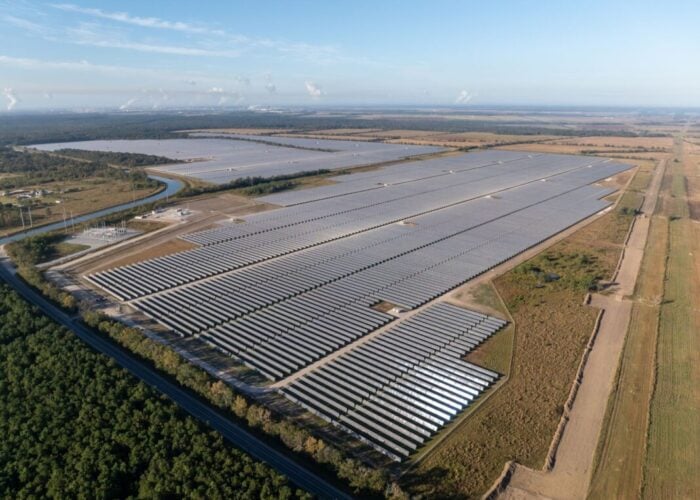
Canadian Solar said it expects margin pressure at its manufacturing division to ease throughout 2022, with demand returning in China from Q2 and pricing strategies used to offset soaring material and logistics costs.
Reporting its Q4 and FY 2021 results today, Canadian Solar revealed it shipped 3.8GW of modules in last year’s final quarter, in line with the firm’s guidance for the period, taking its total annual shipments to 14.5GW. This constituted an increase of around 28% year-on-year.
Unlock unlimited access for 12 whole months of distinctive global analysis
Photovoltaics International is now included.
- Regular insight and analysis of the industry’s biggest developments
- In-depth interviews with the industry’s leading figures
- Unlimited digital access to the PV Tech Power journal catalogue
- Unlimited digital access to the Photovoltaics International journal catalogue
- Access to more than 1,000 technical papers
- Discounts on Solar Media’s portfolio of events, in-person and virtual
While the company’s gross margin came in at 19.7% for the year – above its previously issued guidance – its manufacturing arm, CSI Solar, saw its gross and operating margins both come under pressure as a result of spiraling material and logistics costs.
Total revenues from the company’s manufacturing arm stood at US$1.34 billion for the quarter, taking full-year revenues for the division to US$4.37 billion, an increase of 41% year-on-year.
However the various headwinds to have hit PV module manufacturers in the last year are evident in the division’s bottom line, with increases to CSI Solar’s cost of revenue (up 43% year-on-year) and operational expenditure (up 71% year-on-year) outpacing revenue growth.
Indeed, while CSI’s gross margin of 21.3% in Q4 2021 helped lift the division’s full year gross margin to 15.6%, the business unit’s operating margin for the year stood at just 1.7% – a fall of some 6.5 percentage points from the 8.2% operating margin the division reported in 2020. CSI Solar’s gross margin was also down on 2020, falling four percentage points from the 19.6% recorded in 2020.
Those headwinds have continued into 2022 and, as chief executive Shawn Qu told investors and analysts at a conference call today, have escalated in the opening quarter of the year, resulting in a softer forecast. The manufacturer has maintained its shipments guidance for the quarter of 3.6 – 3.8GW, but expects margins to fall to between 14.5 – 15.5% on the back of high material costs, polysilicon pricing having soared since the start of the year.
CSI said it expected to mitigate this margin pressure through pricing and sales channel strategies, however Qu further added the company’s confidence in cost pressures easing throughout the year.
Qu said that some customers, particularly those in China, were still waiting on costs to come down and that demand was now expected to return from Q2 2022, before stressing that margins are expected to improve throughout the year.
Meanwhile, Canadian Solar also confirmed some minor changes to its manufacturing capacity plan outlined last year. At the firm’s Q3 2021 results in November, CSI said it did not intend to add any new wafering capacity in 2022, finishing the year with the same wafer output it had in 2021 of 11.5GW. However the manufacturer now expects to add around 3GW of wafering capacity this year, according to today’s results.
There have also been minor upward revisions to its forecasted ingot and cell capacities – up 300MW and 600MW respectively, rising to 10.4GW for ingots and 14.5GW for cells by the end of 2022 – while CSI still expects to finish the year with 32GW of module assembly capacity.
Canadian Solar’s energy segment, which includes its solar PV and energy storage project development business, meanwhile experienced growth in 2021, monetizing some 2.1GW of projects, 350MW/1,400MWh of which was energy storage.
The company now has project pipelines of 24GW of solar and 27GWh of energy storage, with the division’s energy storage development business expected to double in 2022 after shipping around 900MWh last year.






